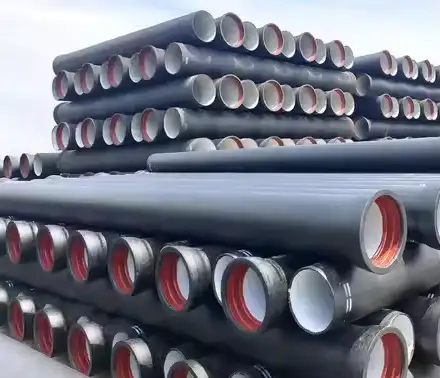Welding dissimilar metals, such as stainless steel and ductile iron, presents unique challenges due to differences in their chemical compositions, thermal properties, and mechanical behaviors. Understanding these differences is crucial for achieving strong, durable welds in applications where these materials must be joined.

🔬 Material Properties Comparison
| Property | Stainless Steel (e.g., AISI 304) | Ductile Iron (e.g., ASTM A536) |
|---|---|---|
| Composition | Iron, Chromium, Nickel | Iron, Carbon, Silicon, Manganese |
| Tensile Strength | 505–750 MPa | 420–700 MPa |
| Yield Strength | 215–505 MPa | 275–500 MPa |
| Elongation | 40–60% | 10–20% |
| Thermal Conductivity | 16–20 W/m·K | 50–60 W/m·K |
| Coefficient of Expansion | 16–17 × 10⁻⁶/°C | 10–11 × 10⁻⁶/°C |
| Melting Point | 1375–1530°C | 1150–1200°C |
These differences can lead to issues such as thermal expansion mismatches, potential cracking, and weld integrity concerns if not properly managed.
⚙️ Welding Techniques for Dissimilar Metals
1. Preheating
Preheating the ductile iron to temperatures between 400–500°F (204–260°C) is recommended to reduce thermal gradients and minimize the risk of cracking during welding.
2. Filler Materials
Using appropriate filler materials is essential. Nickel-based alloys, such as Ni-Fe-CI or Ni-99, are commonly used to bridge the gap between stainless steel and ductile iron.
3. Welding Processes
-
TIG Welding (Gas Tungsten Arc Welding): Provides precise control over heat input, reducing the risk of thermal stress.
-
MIG Welding (Gas Metal Arc Welding): Offers higher deposition rates but requires careful heat management.
-
Stick Welding (Shielded Metal Arc Welding): Suitable for field repairs but demands skill to control heat and prevent defects.
4. Post-Weld Heat Treatment
Post-weld heat treatment may be necessary to relieve residual stresses and improve the mechanical properties of the weld.
✅ Best Practices for Successful Welding
-
Joint Design: Ensure proper joint fit-up with minimal gaps to facilitate effective welding.
-
Heat Control: Monitor and control heat input to prevent overheating and distortion.
-
Cleaning: Thoroughly clean both base metals to remove contaminants that can affect weld quality.
-
Testing: Conduct post-weld inspections, such as ultrasonic testing, to detect any internal defects.
🛠️ Alternatives to Welding
In some cases, mechanical fastening methods such as bolted flanges, transition couplings, or threaded connections may be more practical and cost-effective alternatives to welding.
📹 Related Video
For a visual demonstration of welding techniques for dissimilar metals, watch the following video:
❓ Frequently Asked Questions (FAQs)
1. Is it possible to weld stainless steel to ductile iron?
Yes, welding stainless steel to ductile iron is possible, but it requires careful consideration of material properties, appropriate filler materials, and proper welding techniques to ensure a strong and durable joint.
2. What challenges arise when welding these materials together?
Challenges include differences in thermal expansion, potential for cracking due to thermal stresses, and the need for compatible filler materials to bridge the gap between the two metals.
3. What filler materials are recommended for this application?
Nickel-based alloys, such as Ni-Fe-CI or Ni-99, are commonly used as filler materials when welding stainless steel to ductile iron, as they provide good compatibility and strength.
4. Is preheating the ductile iron necessary?
Yes, preheating the ductile iron to temperatures between 400–500°F (204–260°C) helps reduce thermal gradients and minimize the risk of cracking during welding.
5. Can welding these materials be done in field conditions?
While it is possible to weld these materials in field conditions, it requires skilled personnel and proper equipment to control heat input and ensure weld quality.
6. Are there alternatives to welding for joining stainless steel and ductile iron?
Yes, mechanical fastening methods such as bolted flanges, transition couplings, or threaded connections can be used as alternatives to welding, depending on the specific application and requirements.
References:
- Welding of Dissimilar Metals – Wikipedia
- ANSI/AWS D1.6 – Structural Welding Code – Stainless Steel (American Welding Society)
- ASTM A536 – Standard Specification for Ductile Iron Castings (ASTM International)
- Welding Cast Iron – DIWA (Ductile Iron Welding Association)
- Best Practices for Welding Dissimilar Metals – TWI (The Welding Institute)

